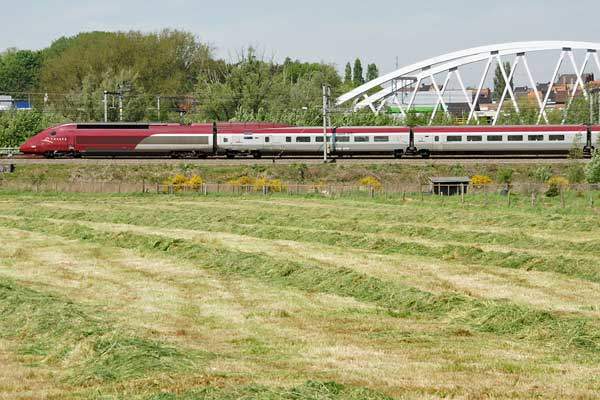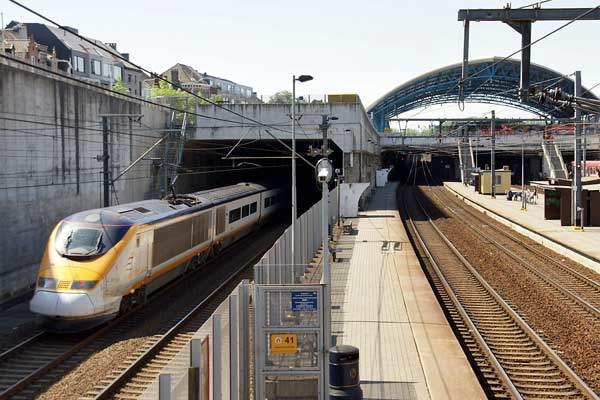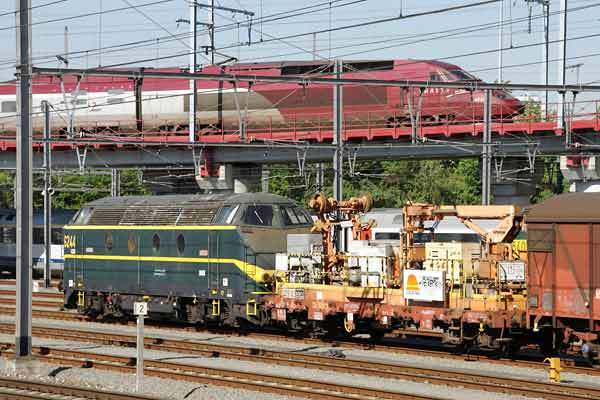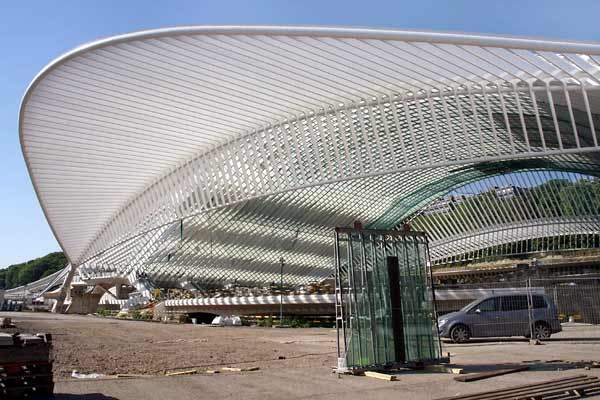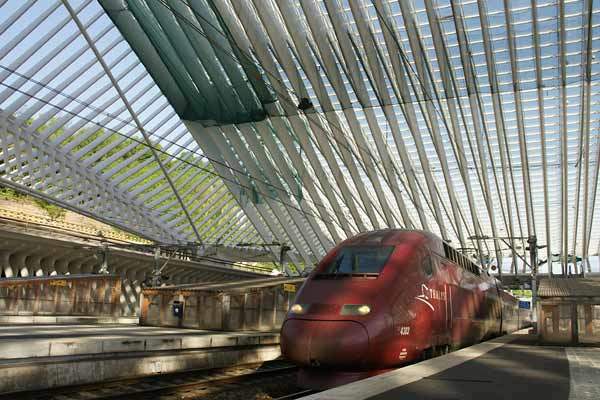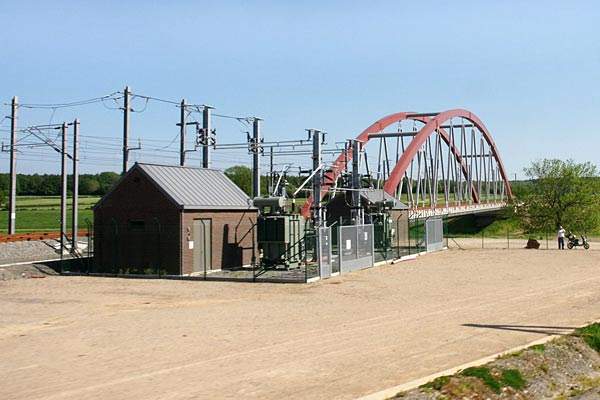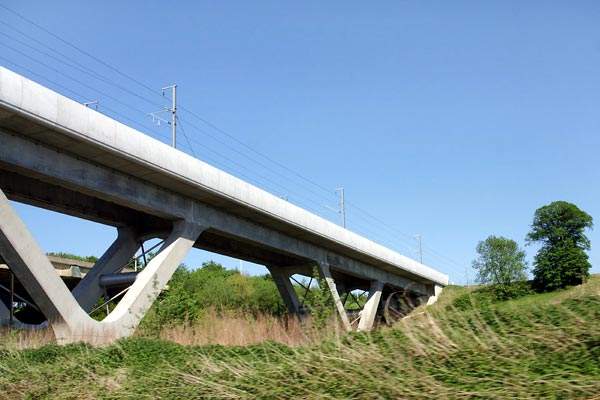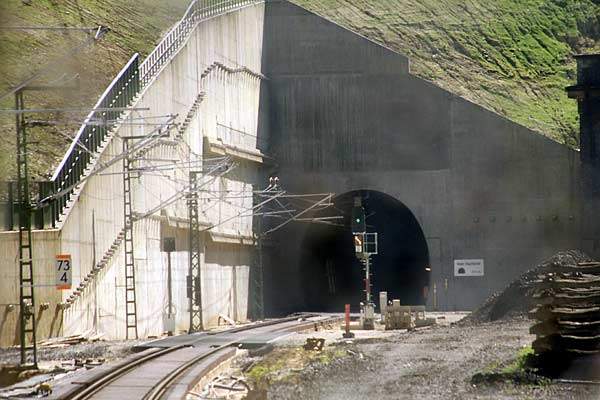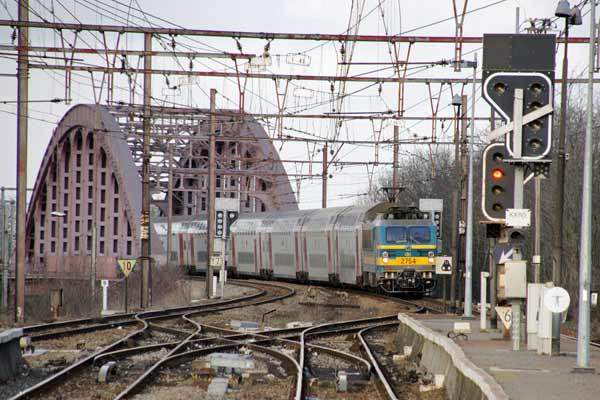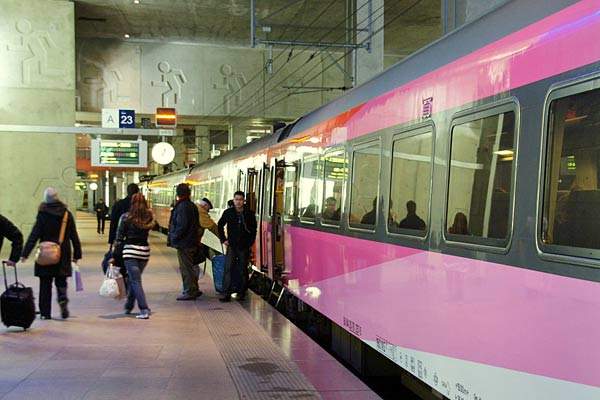Principal administrative centre for the European Union, the Belgian capital of Brussels is also the focal point for a high-speed rail programme that is in continuing development. Belgium was an early adopter of railways and possesses a densely packed network providing high frequencies over most lines, generally well placed to serve the predominately urban-dwelling population of around 10.5 million.
The project
National operator SNCB/NMBS and SNCB Group infrastructure body Infrabel have several projects geared to meeting expected rises in passenger levels and to generally modernise the system. Approximating in size to the US state of Maryland, Belgium’s high-speed line (HSL) programme only in part relates to national needs, as many trips are of relatively short distance.
Although some domestic journeys have been accelerated and the new lines will free up much-needed capacity elsewhere, the HSL projects relate to Belgium’s connections with neighbours France, the Netherlands and Germany, as well as to Brussels being one of three Eurostar termini, along with Paris and London.
The HSL is Europe’s first international high-speed network (HSN) that links Brussels, Antwerp and Liège with major cities of neighbouring countries such as Paris, London, Cologne, Rotterdam and Amsterdam.
Out of 314km of rail, the Belgian HSN will have 200km of new lines. The remaining 114km will be an upgrade of the existing lines. SNCB’s project costs are around €4.7bn for infrastructure work and €350m for buying four Eurostar trains and seven Thalys trains.
Infrastructure
As per the French and German pattern, Belgian HSL operations are compatible with the main network, with multi-voltage high-speed trains able to use the same basic infrastructure as other services. Belgian HSL combine dedicated high-speed tracks (25kV ac) with various levels of upgrading carried out on original routes (3kV dc).
This is exemplified by the first to open (HSL1 – December 1997), between Brussels and the French border, 11km from Lille where it joins LGV Nord.
The 71km 300km/h HSL1 begins at Lembeek, connected to the capital by a 17km section that includes a 450m twin-track flyover to give access to the dedicated platforms 1–6 at Brussels Midi without crossing multiple tracks, and to the rebuilt Halle station in a part-covered cutting that includes a separate alignment for high-speed trains.
Opened in December 2006, the Brussels-Leuven section has reserved use by high-speed trains and domestic intercity services on a pair of tracks between those for slower traffic.
The eastern HSL proper is either side of Liège, the western HSL2 from Leuven to Ans that opened in 2002, and operates Thalys, ICE trains and InterCity services. The 56km HSL3 east from Liège became operational in June 2009. Thalys and ICE trains run on this line.
With extensive use of tunnels (including Belgium’s longest Soumagne, at 6.53km) and viaducts through very hilly country, the €850m dedicated 260km/h HSL bypasses the original route via Verviers, the world’s first international railway. Improvements are being made to sections of the old alignment which are being retained, with the construction of a second Buschtunnel and raising the line speed to 160km/h (100mph).
Handling traffic in advance of completion due in late 2008, the new Liège-Guillemins is 300m east of the now-demolished previous station. With echoes of other work at the Athens Olympics, Lyon Satolas TGV and the Manhattan PATH stations, the Santiago Calatrava design will host high-speed trains on dedicated platforms as well as local and regional services.
Belgium’s northern HSL and connecting lines are the 87km from Brussels to the Dutch border. Between the capital and Antwerp the original line has been upgraded in part for 200km/h, with a by-pass of the awkward layout at Mechelen to be added. The Antwerpen Centraal station reconstruction and North South Junction projects form part of the overall scheme, with 35km 300km/h dedicated HSL 4 north from Antwerpen connecting with the Dutch HSL-Zuid. The HSL-4 was completed in 2009. This contains the only intermediate station on a Belgian HSL proper, Noorderkempen, which serves as a park and ride facility.
The Netherlands has invested €500m for the HSL between Antwerp and the Dutch border while the EU has supported the project with €215m in funding.
The Watermael-Schuman-Josaphat project has been undertaken by RER/GEN (Regional Express Net) for expanding two tracks on Line 124 and Line 161. The project includes upgrading of track beds, track, overhead lines, bridges, tunnels, stops and stations.
The work on the Watermael-Schuman-Josaphat section includes renovating the Brussels-Schuman station and constructing the tunnel linking from Schuman to Meiser. This will be completed in two lots: Lot1 and Lot2.
Lot1 includes restructuring of Brussels-Schuman station and destroying and reconstructing the Rue de la Loi road tunnel exit. Lot2 encompasses construction of a tunnel under Rue Archimède. Lot 1 and Lot2 began in October 2008 and are expected to be completed in 2012.
The HSL network has built its western branch in less than five years. The branch includes 88km of track, out of which 71km was designed for new lines while the remaining for upgrading the existing railway lines. The new lines can be used for commercial-speed trains travelling at 300kph whereas the modernised lines are suitable for speeds of 220kph.
The link between Brussels and Leuven in the eastern section has been expanded from two tracks to five. The new outer track is used for slow trains whereas the central track is utilised for trains travelling with a speed of 200km/h.
The north branch section comprises the route between Brussels and the Dutch border with 46km of track overhauled. The tunnels built by TUC Rail at the city connect the northern and southern parts.
Rolling stock
The Alstom-built TGV family of trains are the main users of Belgian high-speed lines, the main variant being the sets belonging to Brussels-based consortium Thalys. With a strong business user identity as well as serving the leisure market, the Thalys uses all three arms of the network for services to Paris, Köln and Amsterdam. SNCF operates TGV sets from Brussels Midi for destinations beyond Paris such as Nice and Perpignan.
Previously fitted for 750V dc third rail operation as well as 25kV ac and 3kV dc, also built to allow for the UK loading gauge, 20-vehicle (18 coaches, two power cars) Eurostar ‘Three Capitals’ sets work between Brussels Midi and London St Pancras International. Also originating at Brussels Midi for services along the eastern HSL to Frankfurt Main, DB uses four-voltage ICE3M, some of which are NS-owned and used in a pooling arrangement. The Brussels-Leuven section is used by SNCB/NMBS 200km/h Inter-City trains powered by 3kV dc / 25kV ac Class 13 locomotives.
Signalling and communications
Several signalling systems are installed on Belgian HSL, with French standard TVM430 used on HSL-1. Belgian TBL 2/3, allowing for 300km/h running and also downwards compatible with the TBL1 found elsewhere on the network, was to become the national standard for major lines including HSL. However, with ensuing ERTMS developments, only HSL 2 is so-fitted. ETCS Level 2 is installed on HSL3, but as with HSL4, its use is dependent upon having rolling stock being suitably equipped, a factor which has slowed commissioning of upgraded services.
As appropriate to its location and range of services, Brussels is a designated hub of the Railteam alliance of European high-speed rail operators. To further compete with short to medium-range airline services, Railteam aims to introduce ticketing on a single website, loyalty schemes and shared access to station facilities during 2009.
The future
Another train type is due to use the Belgian HSL, the much-delayed Ansaldo-Breda 8-vehicle V250 as ordered in 2004. For use by Dutch operator NS Hispeed and SNCB over the northern HSL and HSL-Zuid in the Netherlands, the first of 19 multi-voltage 250km/h ‘Albatros’ class was received for testing at Velim in the Czech Republic during spring 2008.
With implications for high-speed operations, rail services through Belgium will be considerably modified under the Diabolo project to integrate Brussels National (Zaventem) Airport more widely into the network. It was originally scheduled for completion in 2012, but has been delayed.

